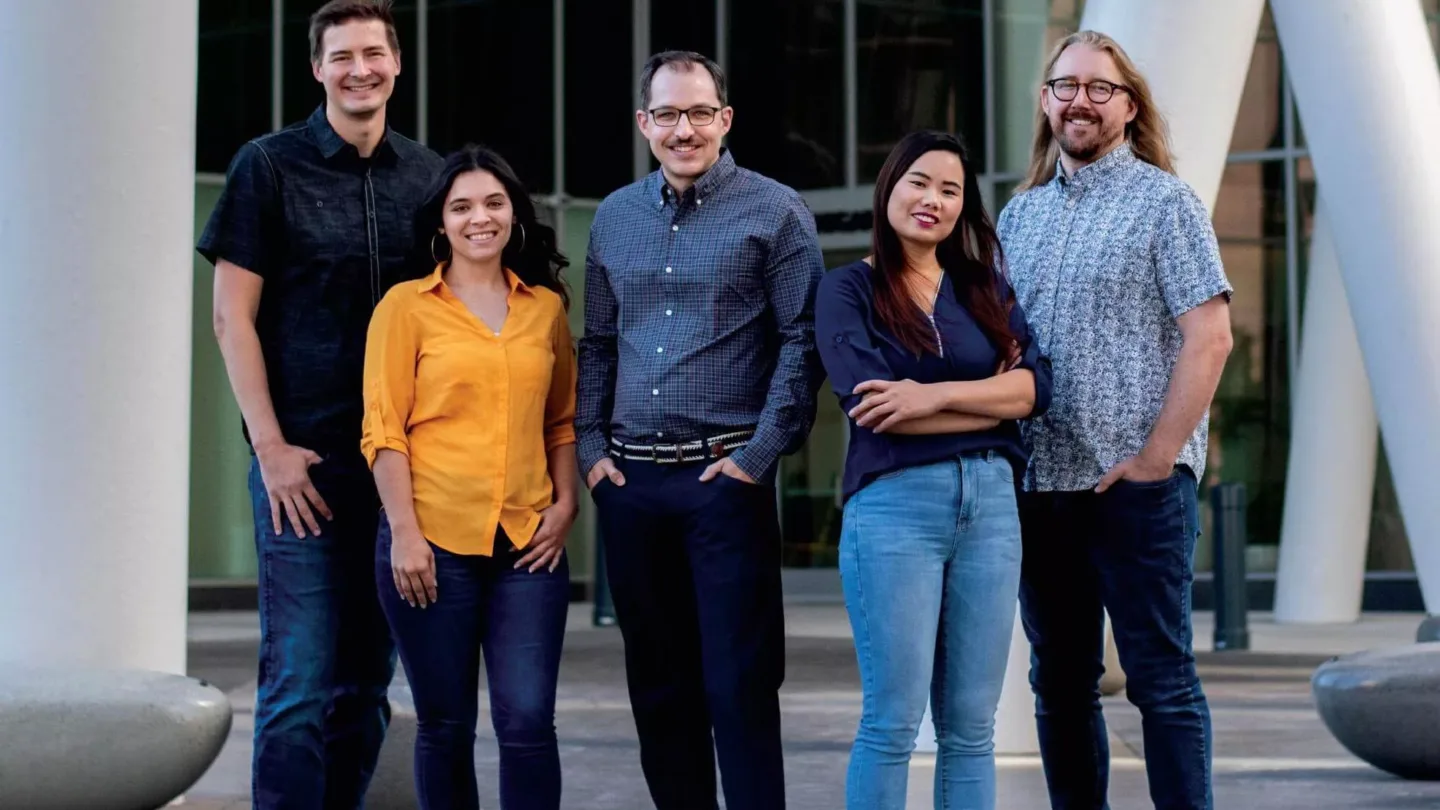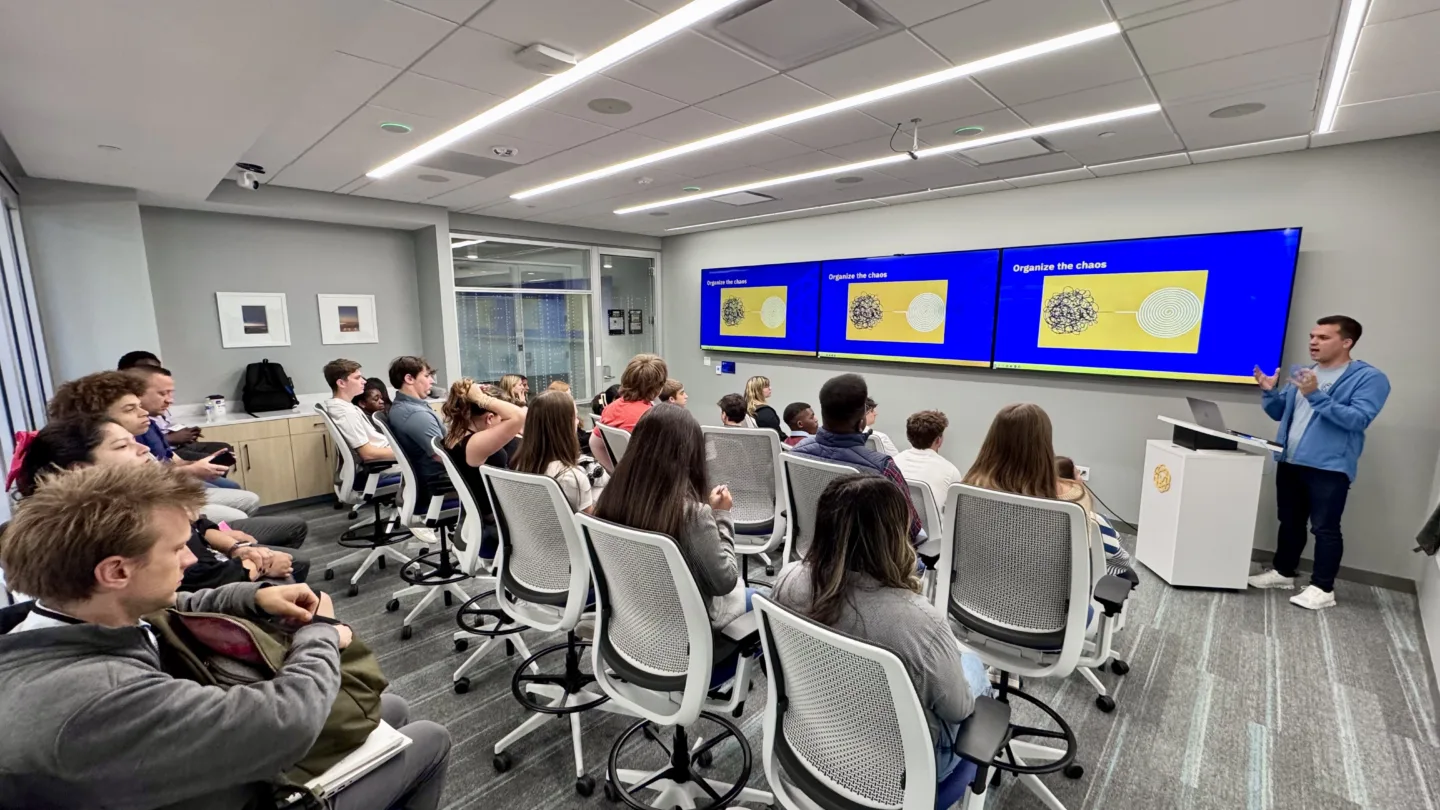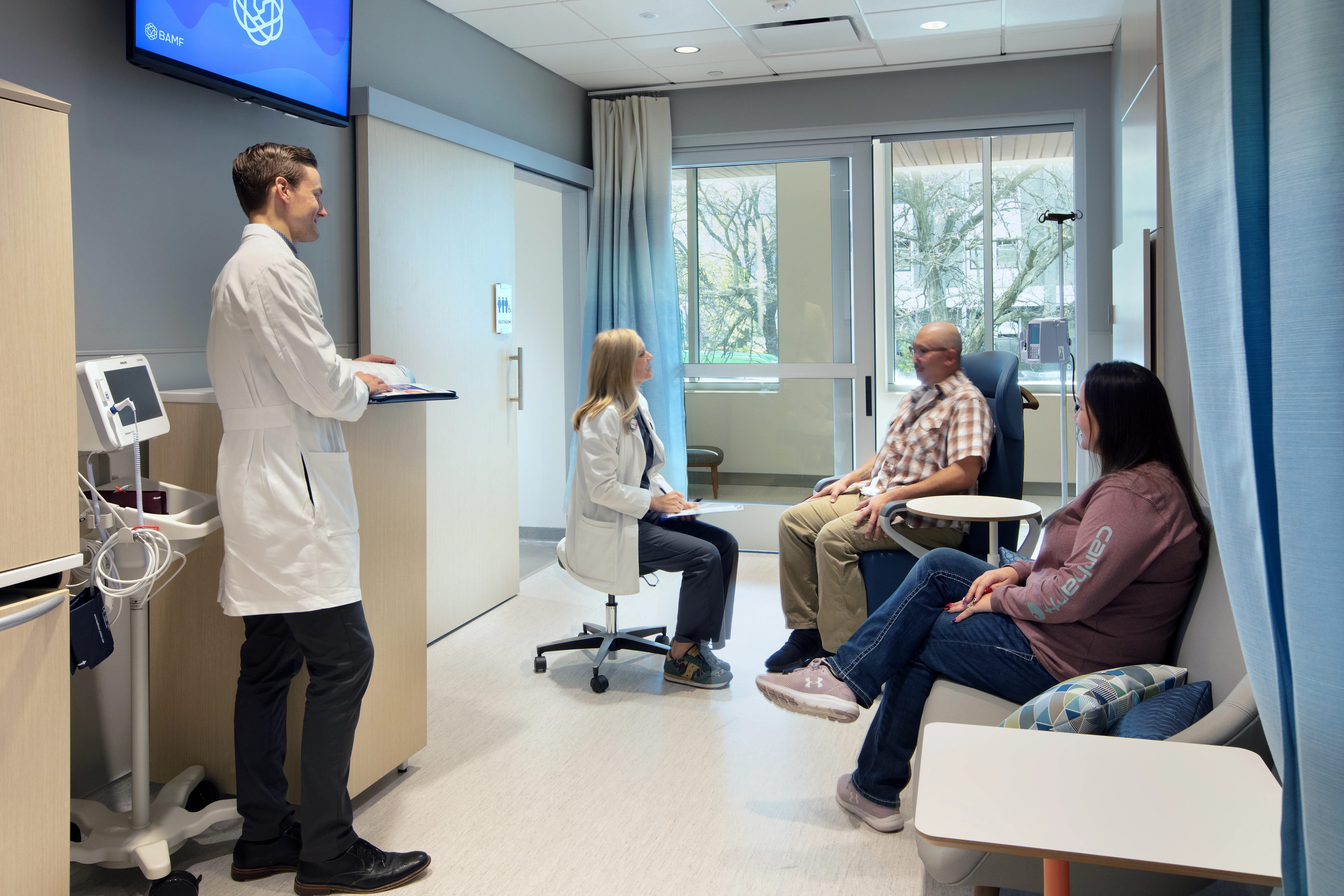
Originally posted via GV Magazine by Michelle Coffill
Years before moving into their multi-million dollar global headquarters on Grand Rapids’ Medical Mile, Anderson Peck ’12 said he and Anthony Chang would meet at the East Grand Rapids Public Library to plan for what would become BAMF Health.
“We would meet there nearly every day until 3:30 p.m. when they would kick us out to make room for the students,” said Peck, who earned a master’s degree in biomedical engineering.
BAMF (Bold Advanced Medical Future) Health opened in August in the Doug Meijer Medical Innovation Building on Michigan Street. With cutting-edge equipment unique to the U.S., BAMF Health has the ability to produce novel radiopharmaceuticals and, in some cases, offer same-day treatment to cancer patients in its theranostics clinic. Theranostics combines molecular imaging and molecular targeted radiation therapy to accurately diagnose and treat patients.
It’s a high-tech and high-touch facility that provides cancer patients with treatments that until now had only been available in Germany. Peck called BAMF Health both life-changing and life-saving.
Peck and Chang, CEO and founder of BAMF Health, met while working at the Van Andel Institute. As chief technology officer and co-founder, Peck led the design of the radiopharmacy and facility. He also has recruited some key members of the 70-person staff, which include 11 Grand Valley alumni, most of whom have engineering degrees. Peck and four others came from the biomedical engineering program.
Program meets needs of industry, community
The Padnos College of Engineering and Computing launched its master’s degree biomedical engineering program in 2010, after receiving a National Science Foundation grant. Samhita Rhodes and John Farris wrote that grant. Rhodes, professor and director of the School of Engineering Graduate Program, said the Laker alumni who work at BAMF Health epitomize the engineering program’s mission of serving the needs of industry and community.
Rhodes was hired in 2007 with the intent of starting the biomedical program. Her first tasks were to meet with leaders at medical technology companies in Michigan and the Midwest like Stryker, Siemens Medical and GE Healthcare. Starting with a biomedical engineering minor in 2009, Grand Valley now offers the only undergraduate and graduate biomedical engineering programs in West Michigan.
“Through those meetings, we knew we wanted this program to be very entrepreneurial, to address the needs of the growing medical technologies and devices industry in West Michigan and beyond,” Rhodes said. “We wanted to flip the switch on the adage that biomedical engineers are jacks of all trades but masters of none.”
Paul Shields and Jeff VanOss were in the same master’s degree cohort with Peck and they were among the first people Peck recruited to work at BAMF Health, well before there was a building.
“We were meeting in another building that overlooked this parcel of land and Anderson said, ‘See that patch of grass? That’s where our building will be,’” said VanOss ’10 and ’12.
It’s not lost on Peck that early hires like VanOss trusted BAMF Health’s vision. “I was asking people to make a major change in their life by painting a picture for them of what will happen,” he said.
As lead research engineer, VanOss uses artificial intelligence to study the data collected from patients. “I’m studying the images from scans and other patient data and looking for new insights to help determine if this person is a candidate for this type of treatment or not. It’s very validating to see the work being done here,” he said.
Unique technologies get fast-track FDA approval
BAMF Health is the first clinic in the country to use a medical imaging 3D scanner capable of capturing the entire human body in a single bed position. Made by United Imaging, the Total Body PET/CT scanner reduces the time needed to scan a patient from 40 minutes to less than five minutes, Peck said.
Shields, senior research engineer, designs devices to help the radiopharmacy operate smoothly. At the center of the radiopharmacy are two cyclotrons that produce radioactive isotopes used for medical imaging. Using targeted molecular radiation therapy, a significant reduction in cancer cells can be seen within hours.
“The radiopharmacy can produce a wide variety of medicines and produce them the day of administering it to patients,” Shields ’10 and ’12 said. Because it’s such a unique delivery method, machines used to deliver the medicine could not be purchased “off the shelf,” he said.
Shields works with Samantha Spurr, who earned two Grand Valley engineering degrees including a master’s in biomedical engineering in 2021. Now a research engineer, Spurr said the co-op experience she had as a student set her up for success at BAMF Health.
“Working at a startup requires you to do a lot of different tasks,” Spurr said, adding she is called on to train new staff members on automation processes.
The initial patients who were seen at BAMF Health suffered from advanced prostate cancer. Plans are to move to offering treatment for patients suffering from a wide variety of cancers and neurodegenerative diseases. Peck said approval from the U.S. Food and Drug Administration for BAMF Health to treat prostate cancer patients was fast-tracked, as was approval for insurance reimbursement from most insurers.
“We expected approval processes to take two years and had that in our business plan. It took two months,” he said.
Peck’s thumbprint is throughout the facility, from the style and color of furniture in the clinic to the mobile workspaces that easily allow teams from different disciplines to collaborate.
“It’s difficult to put into words, I have invested so much of myself in this facility over these last years. Then in mid-summer to have our first patient to come through was very gratifying.=
“We set out to help people and this is only the beginning. More and more patients have come through and that is reassurance that we are on the right path,” he said.


